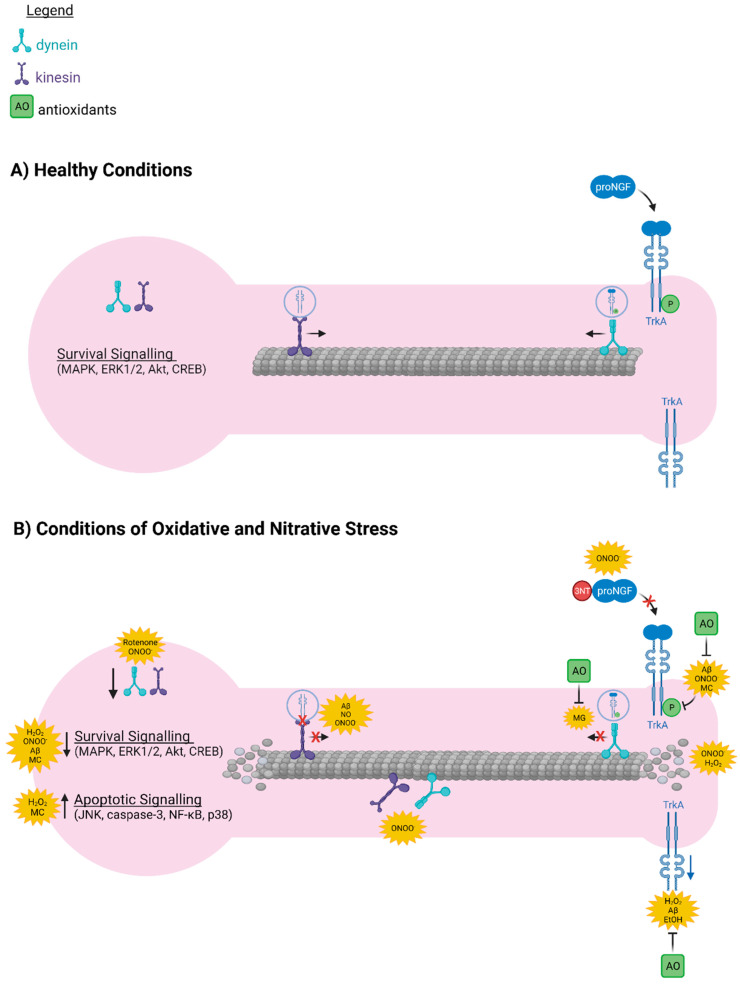Figure 2.
Oxidative and nitrative stress interfere with mechanisms of pro-nerve growth factor (proNGF) axonal transport. (A) Under healthy conditions, tropomyosin-related kinase A (TrkA) is expressed at axon terminals. Binding of proNGF induces TrkA autophosphorylation, internalization, and dynein-dependent retrograde transport. These events activate pro-survival signalling factors in the axon and at the cell body to maintain neuronal health. Kinesin motors transport somal TrkA receptors anterogradely to replenish and maintain axonal expression of TrkA. Kinesin and dynein molecular motors are expressed in the neuron and efficiently bind to microtubules to facilitate axonal transport of TrkA. (B) In conditions of oxidative and nitrative stress, such as in aging, Down’s syndrome (DS), and Alzheimer’s disease (AD), reactive oxygen and nitrogen species (ROS/RNS) decrease both protein and mRNA expression of TrkA. When nitrated, NGF is less efficient at activating TrkA and its downstream signalling factors, including mitogen-activated protein kinase (MAPK), phosphatidylinositol-3-kinase (PI3K), Akt, extracellular signal-regulated kinase 1/2 (ERK1/2), and cAMP response element-binding protein (CREB). ROS have the opposite effect on activation of signalling factors downstream of the pan-neurotrophin receptor, p75NTR, including c-Jun N-terminal kinase (JNK), nuclear factor kappa B (NF-κB), caspase-3, and Bcl-2-associated X protein (Bax), as all of these are increased in conditions of oxidative and nitrative stress. ROS/RNS decrease protein expression of kinesin and dynein molecular motors and interfere with their interaction with microtubules. ROS/RNS also suppress dynein motor activity and interrupt the interaction between kinesin and its cargo. Finally, ROS/RNS cause axonal degeneration and decrease the affinity of tau for microtubules, leading to microtubule instability and further disruption of axonal transport. Antioxidant treatments are effective in restoring TrkA expression, activation, and retrograde transport. The contributing ROS/RNS generators include amyloid-beta (Aβ), hydrogen peroxide (H2O2), ethanol (EtOH), monocrotophos (MC), methylglyoxal (MG), and peroxynitrite (ONOO−). Diagram was created using BioRender.com. 3NT: 3-nitrotyrosine. Up arrow represents increase, down arrow represents decrease.

